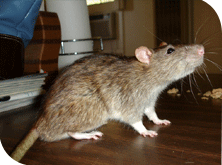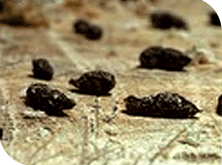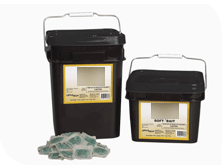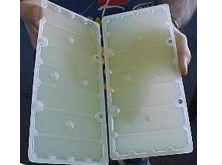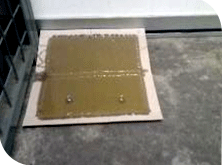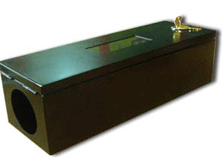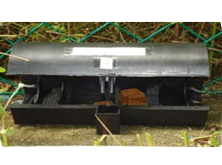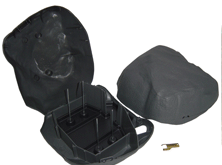Rodents
- Rats and mice are important rodent pests entering homes and warehouses for food and harborage.
- Rats contaminate 10 times as much food as they eat, with urine, droppings and hair
- They can carry at least 10 different kinds of diseases including bubonic plague, murine typhus, spirochetal jaundice, Leptospirosis, rabies, ratbite fever, and bacterial food poisoning
- Rats and mice also start fires by gnawing matches and electrical wires in homes
- The Norway rat, roof rat and house mouse are the most persistent rodent populations in need of control

Types of Rats
Norway Rats
(Rattus Norvegicus)
- The Norway rat, also called the brown rat or sewer rat is a destructive pest found in urban and suburban neighborhoods
- Norway rats are husky, brownish rodents that weigh about 11 ounces
- They are about 13 to 18 inches long including the 6 to 8 1/2 inch tail
- Their fur is coarse and mostly brown with scattered black on the upper surfaces
- Their droppings are 3/4 inches long and capsule-shaped
- Norway rats generally prefer to eat fresh meat, fish, and grain, they can survive quite well on an ounce per day of garbage or decayed food along with an ounce of water
- Norway rats are burrowers and often dig in rubbish and under buildings or concrete slabs
- Burrowing can cause damage by undermining the foundations of buildings, disfiguring landscape plantings and blocking sewer lines
- Norway rats live about 1 year and reach sexual maturity in 3-5 months
- They have 8-12 young per litter and up to 7 litters per year
Roof Rats (Rattus Rattus)
- Roof rat is also commonly known as the black rat and ship rat
- Color ranges from black to grizzled gray to tan with a light belly.
- The tail is longer than the combined head and body
- Droppings are up to 1/2 inch long and spindle-shaped
- Roof rats thrive in attics, roof spaces, palm trees, and ornamental shrubbery
- They are climbers and prefer to nest off the ground
- They can be quite destructive in attics, gnawing on electrical wires and rafters
- Roof rats generally prefer vegetables, fruits and grain; but they consume ½ to 1 ounce per day of food from various sources
- Roof rats live about 1 year and reach sexual maturity in 3-5 months
- They have 6-8 young per litter and up to 6 litters per year
House Mice (Mus Musculus)
- House mice are considered among the most troublesome and economically important rodents
- The house mouse is a small, slender rodent that has a slightly pointed nose; small, black, somewhat protruding eyes; large, sparsely haired ears; and a nearly hairless tail with obvious scale rings
- Droppings are 1/8 inch long and rod-shaped
- House mice live in and around homes, farms, commercial establishments, and in open fields and agricultural lands
- Prefer to feed on grains but usually nibble at a wide variety of foods
- House mice live about 1 year and reach sexual maturity in 6 weeks
- They have 5-6 young per litter and up to 8 litters per year
Signs of Infestation
Droppings

Foot Prints

Grease Marks
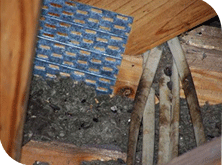
Wood Damage
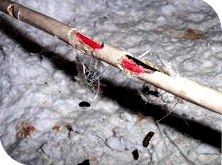
Burrows

Live Rats

Rats Management
Anticoagulant Rodenticide
- Rodents poisoned with anticoagulants die from bleeding internally
- Anti-coagulants are considered safer rodenticides than the acute poisons, because larger doses are necessary to poison humans or pets and these poisons have a simple antidote, Vitamin K1
Glue Boards
- Special glue can be placed in pie tins or paper plates
- Placing a small piece of bait in the center of a glue board can increase effectiveness
Bait Stations
- A tamper-proof bait box is designed so that a child or pet cannot get to the bait inside but the rat can
- Bait station allow placement of bait in locations where it would otherwise be difficult because of weather or potential hazards to nontarget animals
- Most designs are not considered to be truly tamper-proof unless they can be secured to the floor, wall, or ground

